When it comes to the pinnacle of formal daywear, few garments carry the history, elegance, and refined character of the morning suit. What is a morning suit? Whether you’re preparing for a prestigious event or simply curious about the details that set this type of suit apart, this guide will walk you through everything. Let’s step into the world of one of menswear’s most distinguished ensembles.
1. What is a morning suit
A morning suit is a type of formal daywear traditionally worn for events that take place before 6 p.m. It’s most commonly seen at weddings, state functions and races like Royal Ascot. The name “morning” comes from the time of day it’s intended for, distinguishing it from evening formalwear like the tuxedo or white tie.
A traditional morning dress consists of three key suit components: the morning coat, the waistcoat, and the striped trousers. Unlike the modern business suit, a morning suit is steeped in tradition and symbolism; helps the wearer honor the occasion through classic tailoring and refined style.
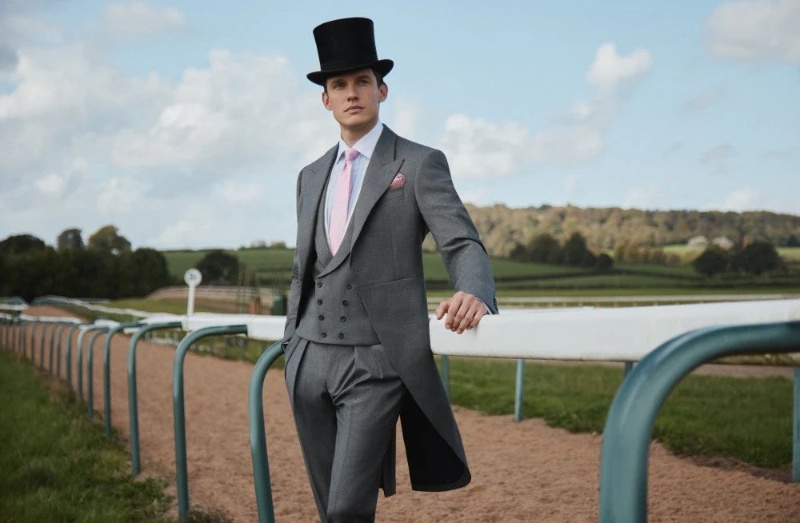
2. What does a morning suit consist of?
A proper morning suit is a masterclass in traditional menswear, composed of distinct pieces that work together to create a refined and dignified appearance.
The morning coat
At the heart of the ensemble is the morning coat, a beautifully cut garment characterized by its long, curved tails and single-breasted front. Traditionally made in black or charcoal grey wool, the morning coat gently tapers at the waist to create a flattering silhouette. The peak lapels and single button fastening at the front reflect its aristocratic roots, offering both formality and grace.
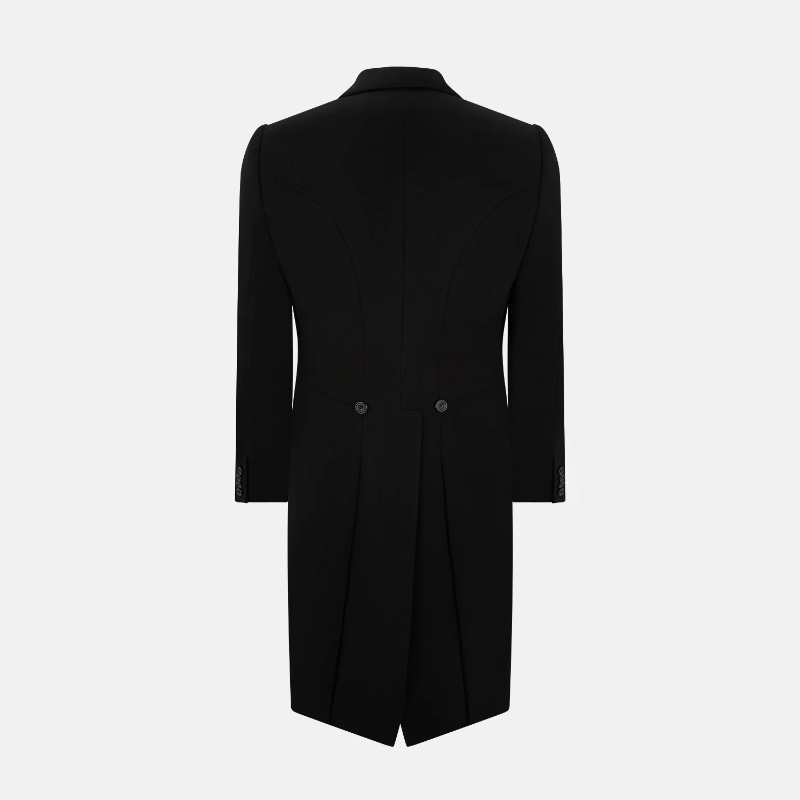
The waistcoat
Beneath the coat lies the waistcoat, a key piece that allows for a touch of personality within the formal structure. Waistcoats for a morning suit are often seen in light grey, buff, cream, or pastel tones, especially for weddings.
Both single-breasted and double-breasted styles are acceptable, though the latter provides a more traditional and stately look. The fit should be snug but never restrictive, and the length should cover the waistband of the trousers.
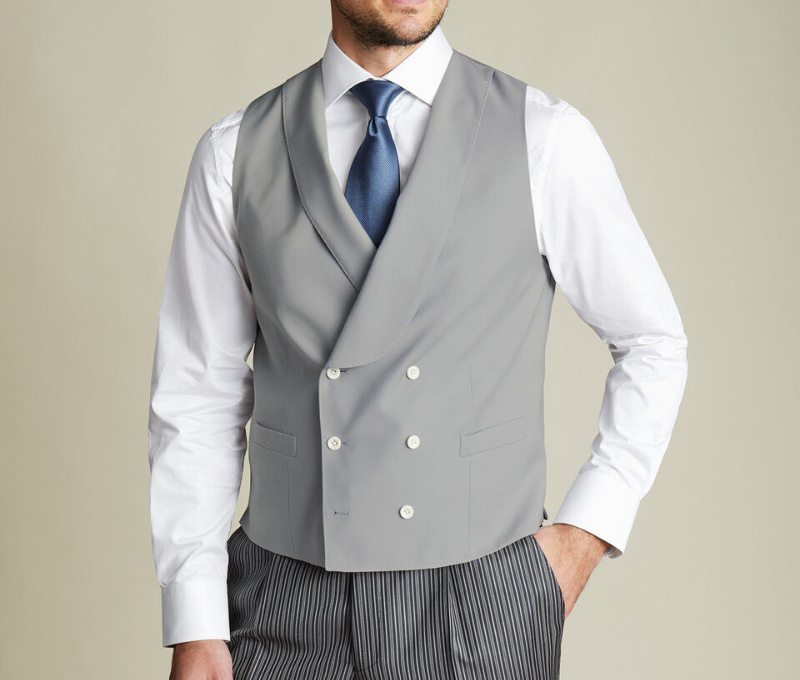
Striped trousers
The trousers in a morning suit are always formal and deliberately understated. Classic grey striped trousers, usually in a herringbone or pinstripe pattern, are worn without cuffs and with a higher rise to sit comfortably at the natural waist.
These trousers are never made to match the coat in fabric or color, this contrast is a signature of the morning suit’s composition.

Optional accessories
While not mandatory, certain accessories elevate the morning suit to its full potential. A top hat in black silk or felt adds ceremonial flair, especially for races or royal events. Gloves, typically in grey suede or white kid leather, provide a traditional touch.
A neatly folded pocket square, preferably white linen, is a simple yet elegant detail. Finish with polished black oxfords and a formal tie or cravat to complete everything.
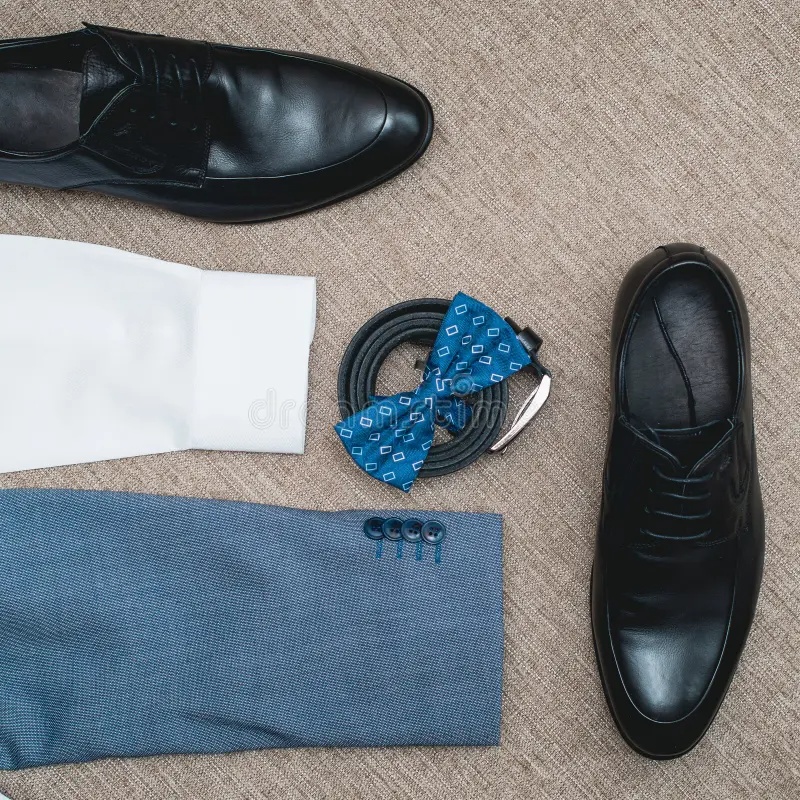
3. When should you wear a morning suit?
Knowing when to wear a morning suit is just as important as understanding what it is. Ultimately, a morning suit isn’t something you wear every day. But when the occasion calls for it, where dress code etiquette is held in the highest regard, no other formal suit can do better than it.
Weddings are perhaps the most common setting where a morning suit shines. Particularly in British-style or royal-inspired ceremonies, the groom, groomsmen, and even distinguished guests often don this attire to honor the formality of the day. It’s not only a respectful choice but also one that photographs beautifully and reflects timeless style.
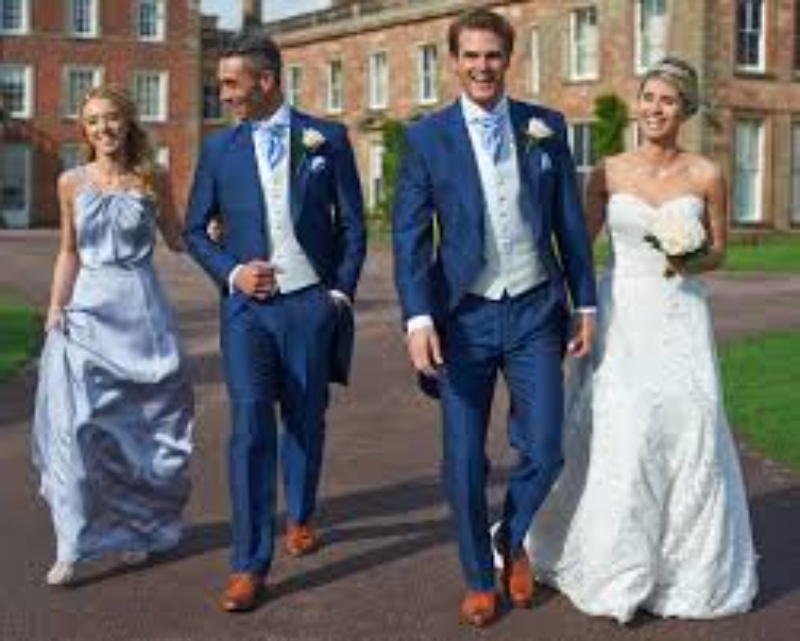
Another iconic event is the Royal Ascot, especially on days when the Royal Enclosure requires strict adherence to dress codes. At such events, a morning suit is not only appropriate but expected. From the morning coat to the top hat, each detail contributes to the sense of pageantry and tradition.
Beyond weddings and races, morning suits are also seen at formal daytime ceremonies, including christenings, state occasions, garden parties, and memorial services. These events typically take place before 6 p.m., which is the general cutoff between morning dress and evening wear.

4. How to style a morning suit
Fit comes first
The foundation of any great look is the fit. The morning coat should contour the torso without pulling at the button, tapering gently at the waist, and flowing cleanly over the hips. The tails should fall just behind the knees, never too long or too short.
Trousers must sit high on the waist and fall with a clean line over the shoes. No break, no pooling. The waistcoat should lie flat against the body, covering the waistband and allowing for freedom of movement without gaping.
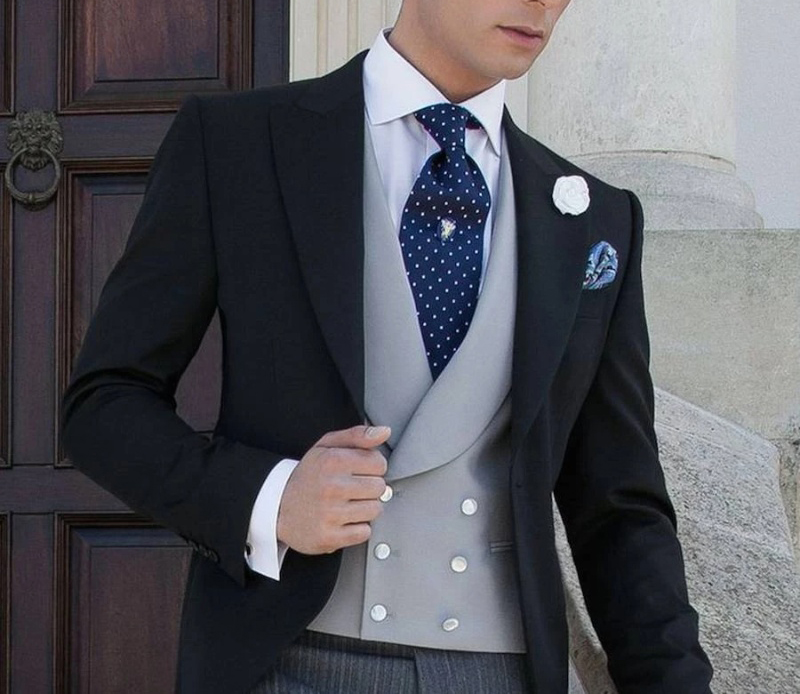
Coordinating colors and details
When it comes to color, a soft contrast is key. A traditional black or charcoal coat pairs beautifully with a light grey, cream, or buff waistcoat. The tie or cravat should complement the occasion: pale pastels for weddings, deeper tones for more formal or sombre events.
A crisp white shirt with a spread or wing collar provides a clean canvas, while a neatly folded white pocket square adds that final, tailored touch. Accessories like a silver tie pin or subtle cufflinks add polish without drawing too much attention.
Styling as a groom vs. a guest
If you’re the groom, your morning suit should stand apart just enough. Consider a double-breasted waistcoat, a custom lining, or a personal touch like a monogrammed shirt. This is your day to stand confidently at the center of it all.
As a guest, your role is to complement the formality of the event without upstaging. Stick with traditional tones, follow any specific dress codes, and keep your styling refined and understated.

Common mistakes to avoid
The most common mistake I see? Wearing a matching 3-piece suit and calling it a morning suit. Remember: a true morning suit has contrast: a black or grey coat, striped trousers, and a separate waistcoat.
Other pitfalls include overly short coats, low-rise trousers, or skipping the waistcoat altogether. And while personal flair is always welcome, avoid novelty accessories. They can cheapen an otherwise timeless look.
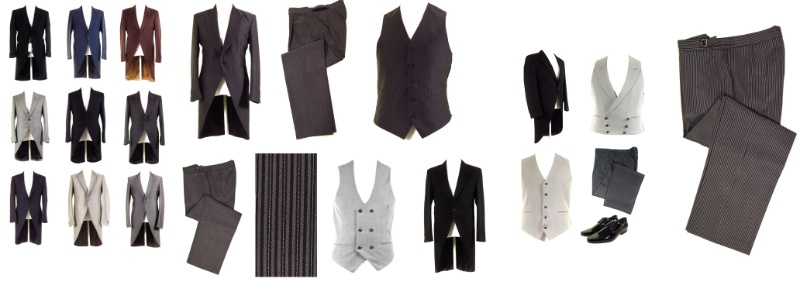
5. Morning suit vs. Tuxedo vs. Tailcoat: What’s the difference?
In the world of formal menswear, few things are more misunderstood than the differences between a morning suit, tuxedo, and tailcoat. Understanding the difference and when to wear each is what separates a well-dressed man from a truly refined gentleman.
Let’s begin with the morning suit
This ensemble is strictly for formal daytime events, typically held before 6 p.m. Think weddings, royal ceremonies, and daytime races like Royal Ascot.
The morning coat features a cutaway front with long tails at the back, paired with striped trousers and a contrasting waistcoat. It’s elegant, dignified, and rooted deeply in British sartorial tradition.
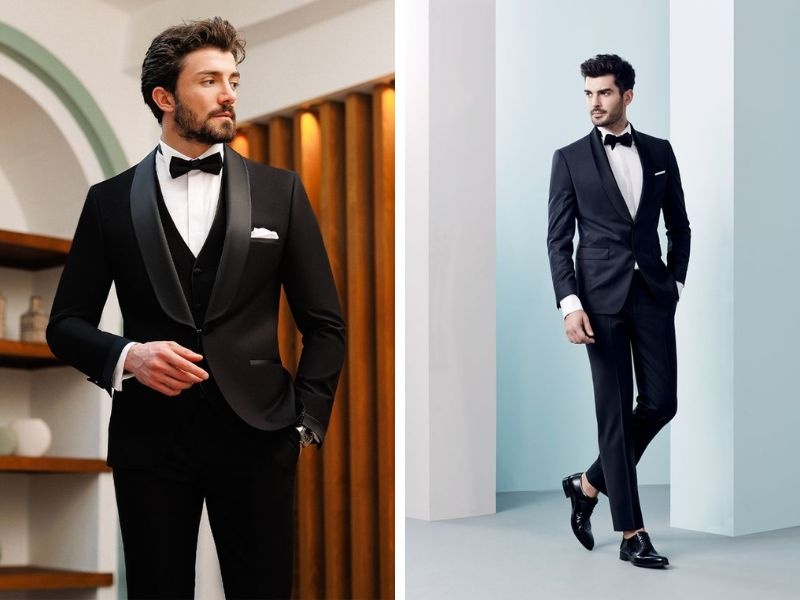
In contrast is the tuxedo
Also known as the dinner jacket is designed for evening wear. A tuxedo typically consists of a black or midnight blue jacket with satin lapels, worn with matching trousers, a formal white shirt, and a bow tie. It is the go-to choice for black-tie events, evening receptions, or galas.
While both a morning suit and a tuxedo are formal, they are not interchangeable. Wearing one at the wrong time of day is a subtle but telling misstep in etiquette.
The last one’s the white tie tailcoat
This is the most formal eveningwear of all. Unlike the morning coat, the evening tailcoat is cut to be short at the front and dramatically long in the back, worn open to reveal a crisp white waistcoat and starched wing-collar shirt beneath.
Reserved for royal banquets, state dinners, or opera galas, the tailcoat represents the pinnacle of old-world formality. It is never worn during the day.
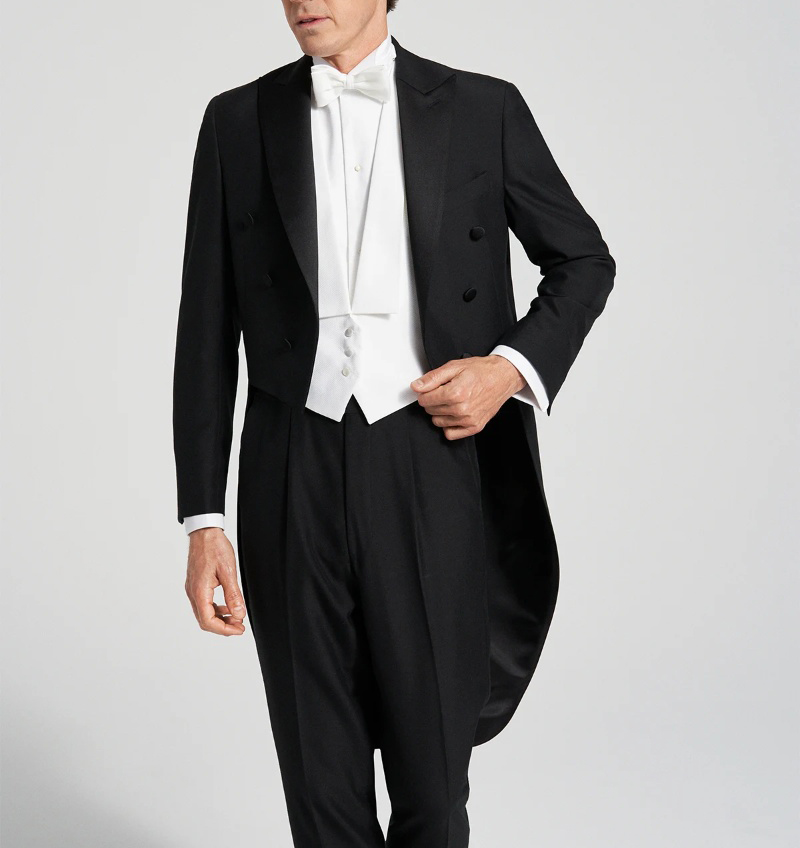
From a structural standpoint, the morning coat and evening tailcoat may appear similar due to their tails, but their styling, fabric choices, and occasions are entirely different.
Where the morning suit favors soft greys and elegant contrast, the tailcoat demands stark black and white. The tuxedo, on the other hand, offers a sleek, modern silhouette with minimal detailing, perfect for stylish but slightly less formal evening affairs.
Now that you have a clearer picture of what is a morning suit, you can truly appreciate its elegance and purpose. From its finely tailored coat to the classic striped trousers and crisp waistcoat, the morning suit remains an enduring symbol of sophistication in formal daytime dress.
Image cre: Internet
Create from my passion about sartorial that I accidently discover when I was searching to upgrade my style, this website is dedicated to providing in-depth knowledge, expert styling tips and the latest trends in men’s tailored fashion. Though sometimes I might sound a little cheesy cuz of all that philosophy book I’ve read 🙂
